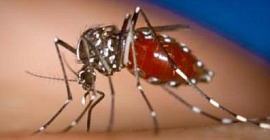Scientists have identified a rare type of neuron in mice that's responsible for detecting the pleasant stroking of skin. The finding opens the door to exploring the molecules and neural pathways that recognize a positive touch.
In previous work, a team led by Dr. David J. Anderson of the California Institute of Technology identified a rare population of sensory neurons in mice. These neurons, found exclusively in hairy skin, express a receptor called MRGPRB4. Unlike related neurons, MRGPRB4 neurons taken from the body weren’t activated in the laboratory by mechanical, chemical or heat stimulation. The researchers thus set out to examine these neurons in intact mice.
The team developed a way to target a calcium sensor protein to MRGPRB4 neurons. For comparison, they targeted neurons expressing a related receptor called MRGPRD in other mice. Using a technique called 2-photon imaging, the scientists were able to detect the calcium changes within these neurons that reflect nerve fiber activity. Nature.
The researchers found that, as expected, nerve fibers expressing the MRGPRD receptor were activated by pinching but not by gentle stroking. In contrast, fibers expressing MRGPRB4 were activated by massage-like stroking, but not by pinching.
The researchers designed their system so that the targeted neurons could also be activated by a simple chemical injection. This allowed them to explore whether the mice perceived the signals coming from these neurons as pleasing. Mice were placed in an apparatus with 3 chambers. In one chamber, they received injections that activated the targeted neurons. In the other, they received an injection of saline.
Get The Latest By Email
The scientists found that mice preferred the chamber where they received injections to activate MRGPRB4 neurons. In contrast, mice showed no preference for a chamber in which the injection activated MRGPRD neurons.
We've known a lot about the neurons that detect things that make us hurt or feel pain, but we've known much less about the identity of the neurons that make us feel good when they are stimulated,” Anderson says.
These findings open the way to investigate the molecular mechanisms operating in these cells and explore how these neurons communicate to the brain. However, further studies will be needed to identify similar sensory neurons in people.
Since there are probably dozens of different kinds of neurons that innervate the skin, we hope this will advance the field by making it possible to figure out all of the different kinds of neurons that detect various types of stimuli,” Anderson says. Article Source: NIH Research Matters










